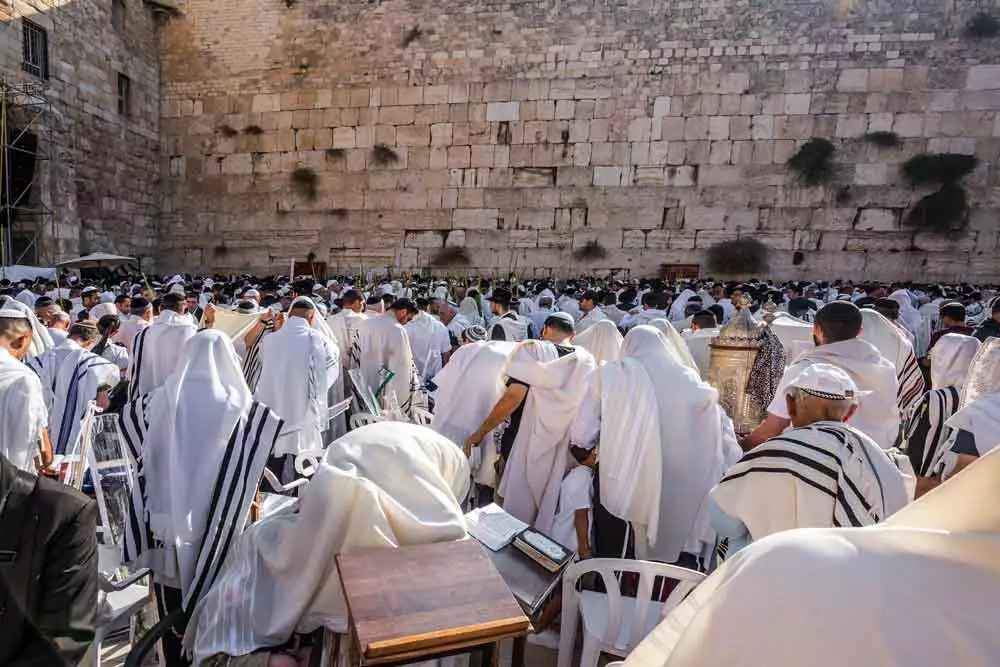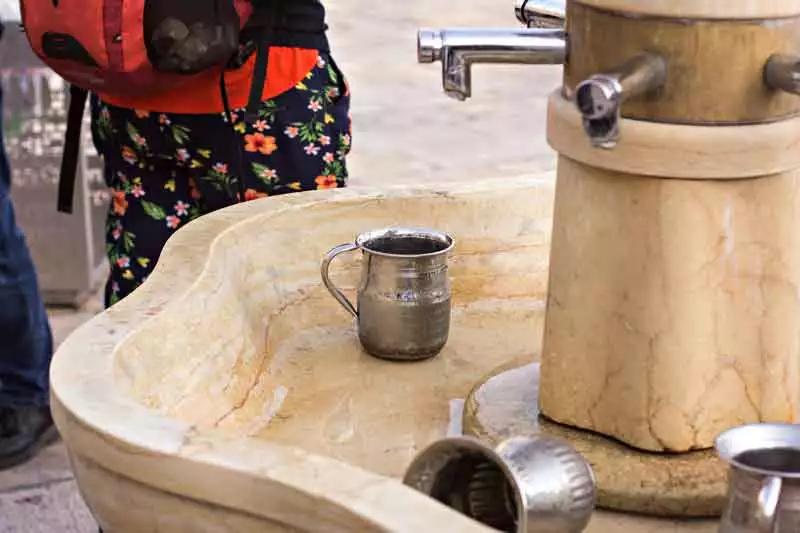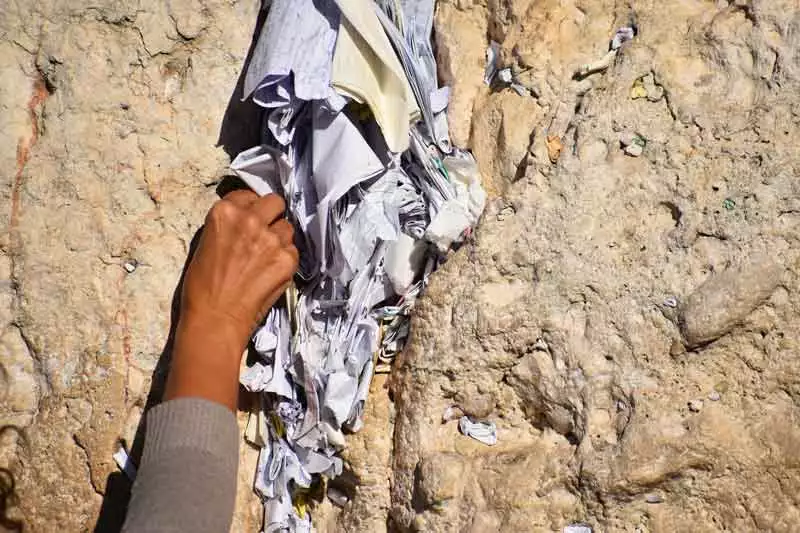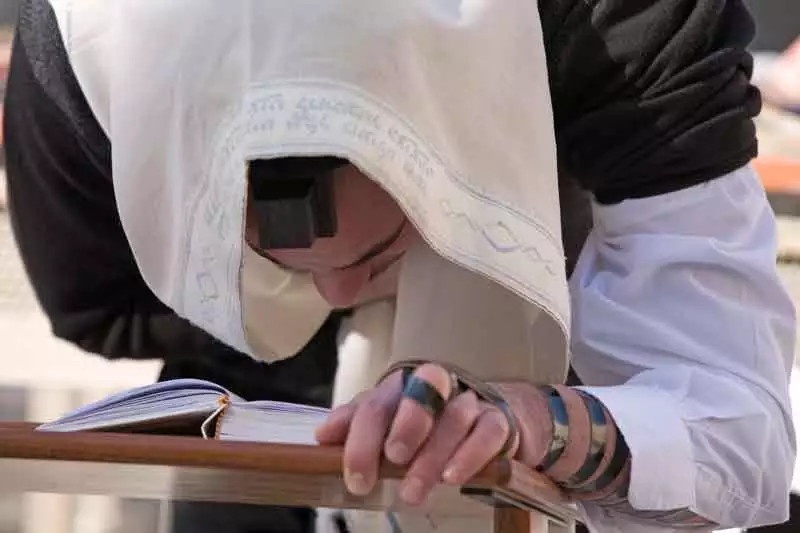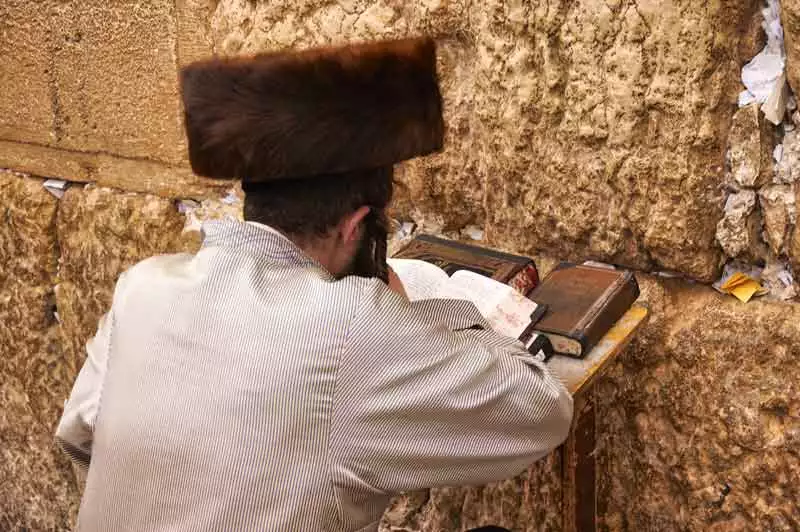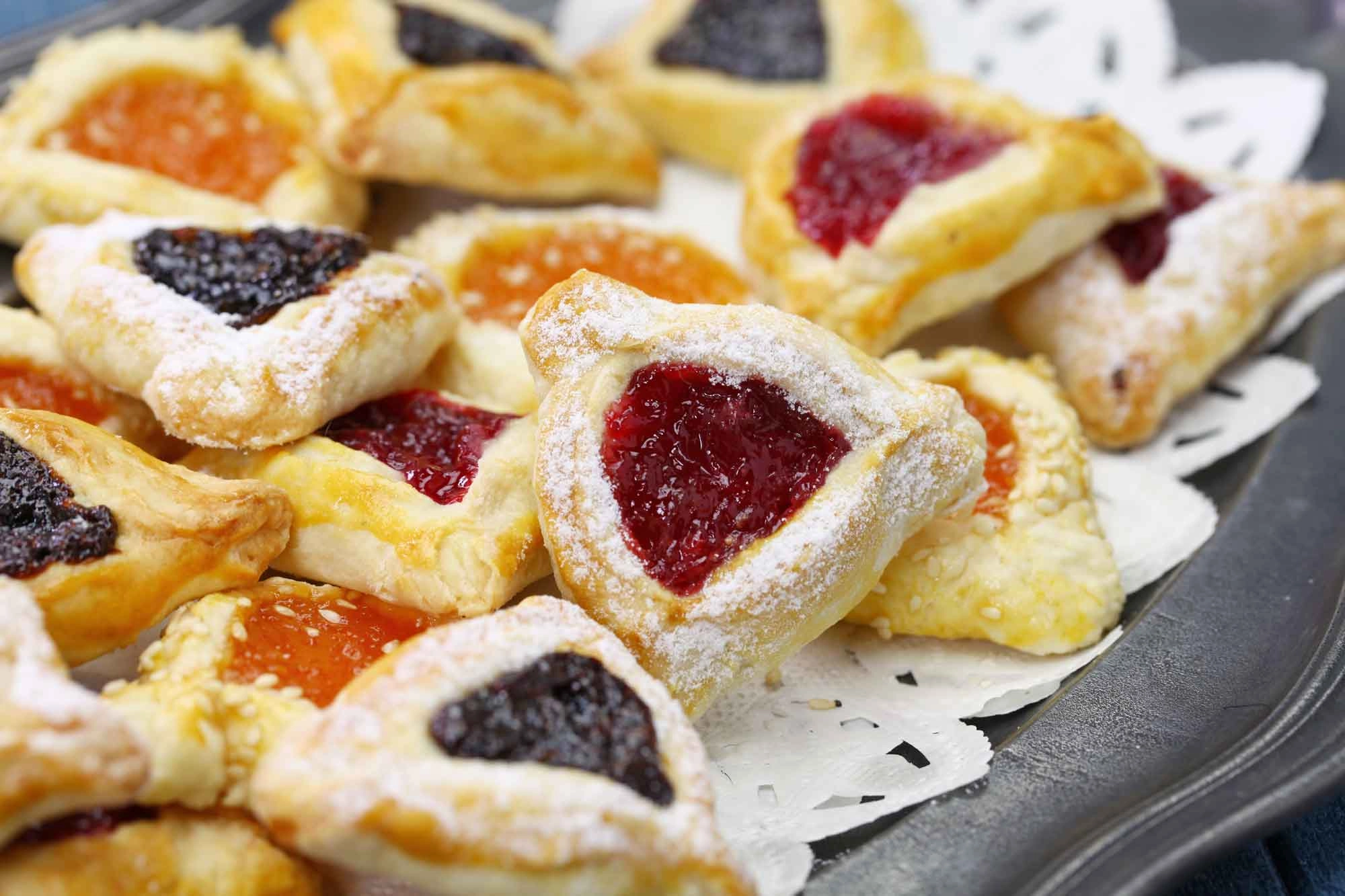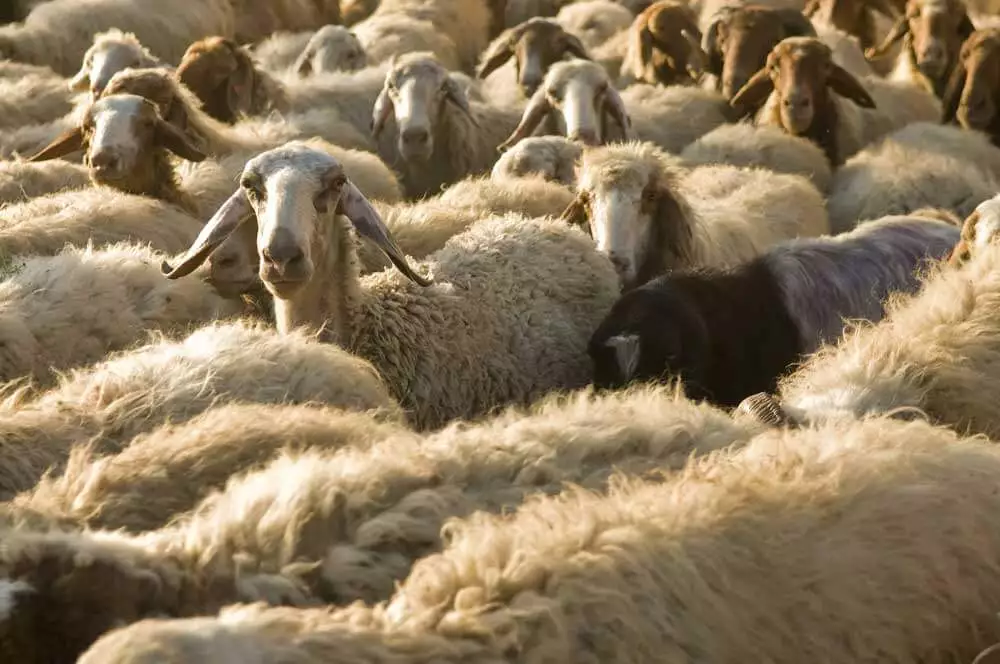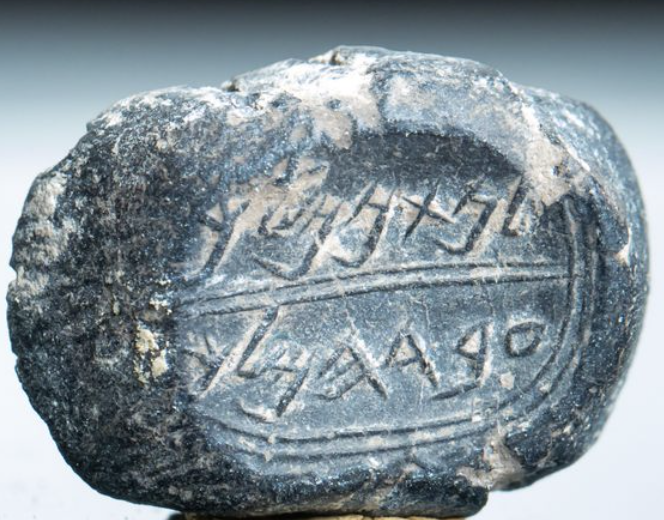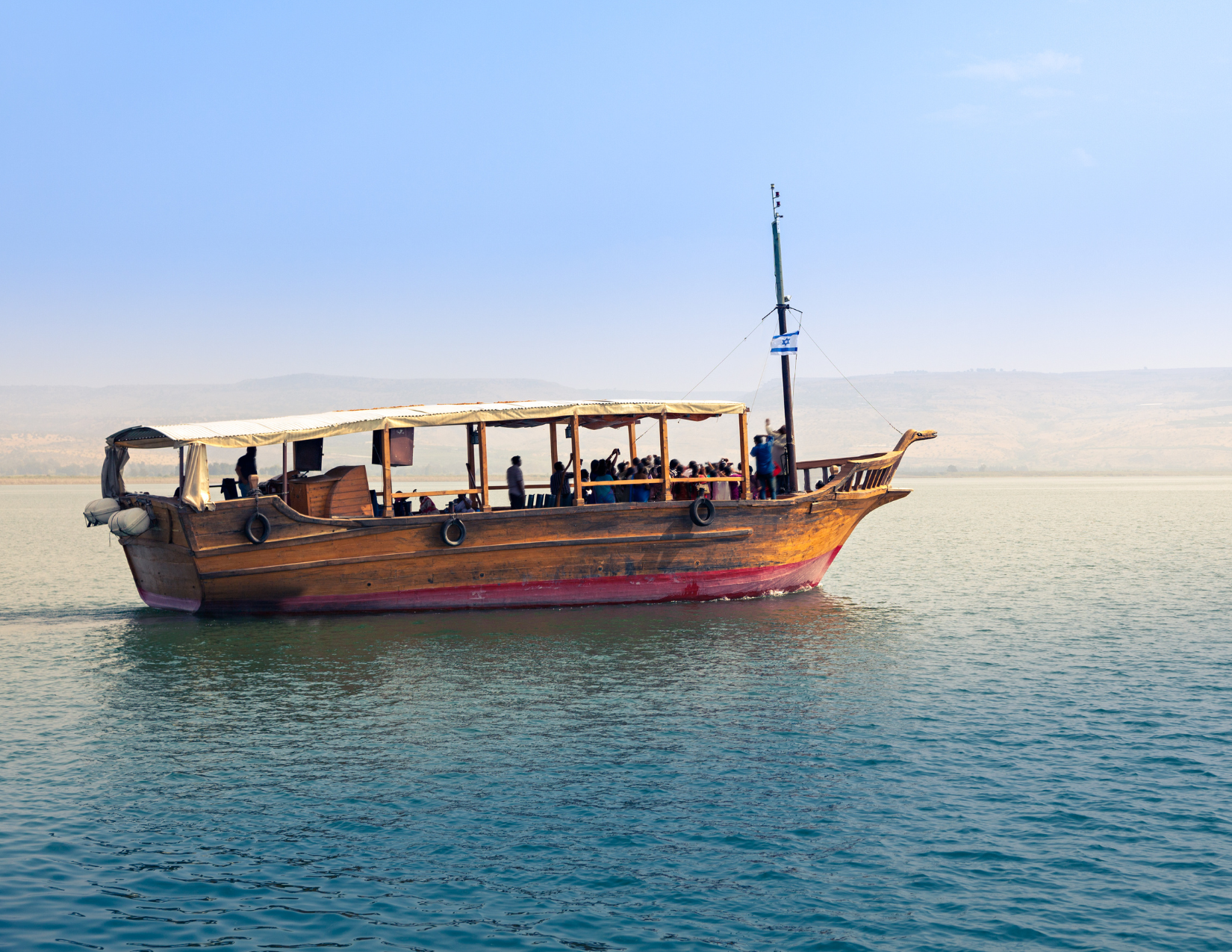The holiest accessible site of all of Judaism is without question the Western Wall. Also known as the Wailing Wall or Ha-Kotel Ha-Maʿarav (Kotel, Kosel) the wall is the only part of the Temple that remains and therefore the closest to the Holy of Holies that modern Jews can get to pray.
The Western Wall is constructed of limestone, also known as “Jerusalem stone” and was constructed during the time of Herod the Great (called the Great due to his building prowess). The entire length of the wall is over 1600 ft long, though only a smaller portion is used from prayer. During the Roman rule between the 4th and 7th centuries, Jews were not permitted in Jerusalem except for Tisha B’av, a holiday reserved for the mourning Jewish tragedies, most importantly the loss of the Temples. Therefore they would go to the wall and cry and mourn which is how it was nicknamed “the Wailing Wall”, but it was mostly called that by non-Jews and is seen as derogatory by many.
For many, a visit to the Western Wall is a highlight of their Holy Land tour through Israel. No tour is complete without it. When you arrive though it often brings up many questions about what is seen at this important cultural, historical and religious site. Here are some of the inquired about things when visiting the Western Wall.
Men this Way, Women That Way
When you arrive to the Western Wall, you will see partitions put up dividing the prayer section of the wall. This is because men and women are not allowed to pray together at the wall. Men will approach on the left and women on the right.
You may also notice people walking backwards from the wall on both sides. This is a sign of respect, to prevent from turning your back on the wall. Just be sure to look backwards so you don’t bump into anyone!
Plaza Fountains
Ritual cleansing is a major part of worship in Judaism. Therefore you will see fountains around the plaza for ritual hand washing before heading to the wall to pray.
Dress Appropriately
It is a sign of respect to be modestly dressed when approaching the Wall. For women, this includes having your knees, chest and shoulders covered. For men, trousers and shoulders covered is also appropriate. In addition, men must cover their heads. If they don’t have a hat, communal kippahs are available.
Security
The Western Wall is a place of great importance in Judaism and a place of political importance. When you arrive, please be prepared to go through security and a metal detector. This is not any reason for concern and is just an added measure of safety so the focus can be prayer.
It isn’t Quiet!
You may think a place of prayer as being quiet, but the Western Wall is anything but. There are people form around the world with tour groups, individuals and many Bar Mitzvah parties. Be prepared for horns and drums and lots of activity.
The Wall is Filled with Paper
It is a long held practice to put prayers on small pieces of paper and stick them into the cracks in the wall. The wall is often packed with these prayers and it can be difficult to find a place to put your own. The Rabbi of the wall removes the prayers twice a year and buries them on the Mount of Olives. He never reads or counts them, but there are usually over 100 grocery bags full!
Pictures at the Western Wall are Fine, Usually
The Western Wall is one of the most photographed walls in the world. There is no problem taking pictures to remember being there, but there are some basic rules to follow; Don’t take pictures of people’s faces, especially when in prayer. Photography is not allow on Shabbat, so you should arrange your visit for another day.
What Are They Wearing?
You may see may different types of worship wear when at the wall by religious jews. While there are many different types of worship dress, these are a few of the things you may see:
- Prayer Shawls– May men wear prayers shawls at the wall. these are often white with blue on them and always have fringe. The fringe numbers 613, corresponding to the number of laws. The men often wear these in accordance with Numbers 15:38-40. It is often around their shoulders, but is put over their heads for more important prayers.
- Tefillin- It can be a new thing for people to see men praying with a small box strapped to their heads and is one of the biggest questions asked. This small box, called a Tefillah in singular form, holds scrolls or paper with verses from the Torah. This is to serve as a sign that God saved the Jewish people from Egypt. The scrolls contain 4 verses; Exodus 13:1-10, Exodus 13:11-16, Deuteronomy 6:4-9, and Deuteronomy 11:13-21. Each scroll can take 15 hours to make. You will see them bound to their hands, arms and head.
- Fur Hats– One of the most striking things you will see is Orthodox men wearing large fur hats, called Shtreimel or Spodiks. They generally wear these for Shabbat, weddings, minor festivals, and Bar Mitzvahs. The interesting part of this headwear is that is is generally regarded as just a traditional piece of clothing and unlike many aspects of Jewish wear, holds no religious symbolism. It is thought to have just been popular in the countries these ultra-orthodox sects came from.
When you look around the Western Wall and plaza, be on the look out for these interesting extra special sights!
Ready to start planning your journey to the Holy Land the the Western Wall? Contact us today and let us start your proposal with no commitment!

